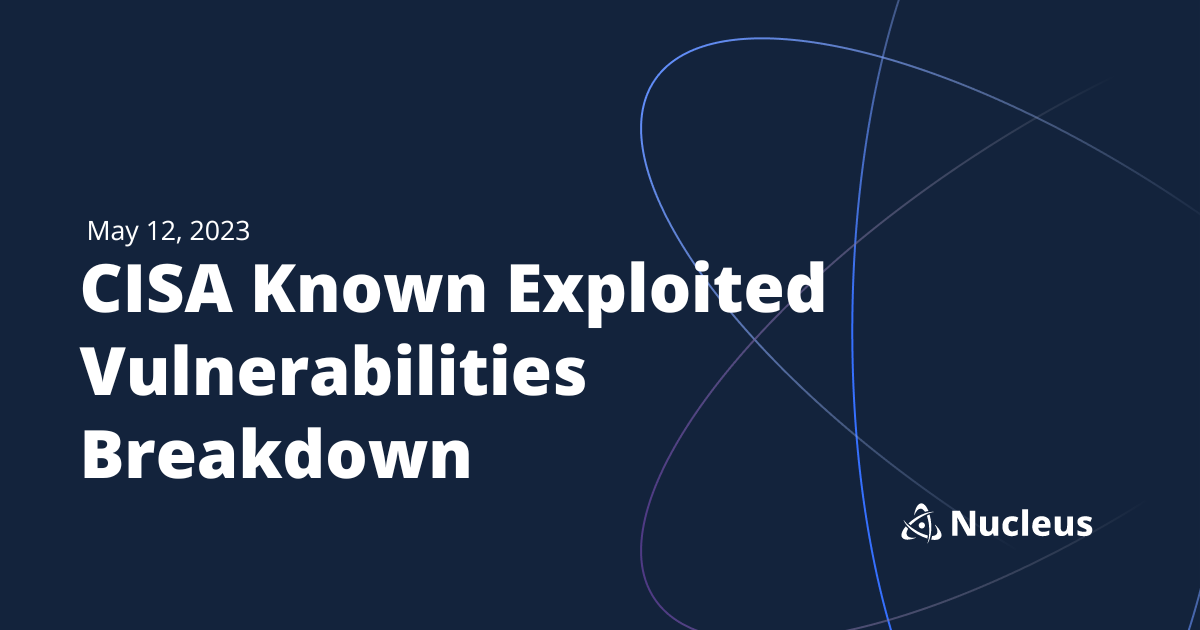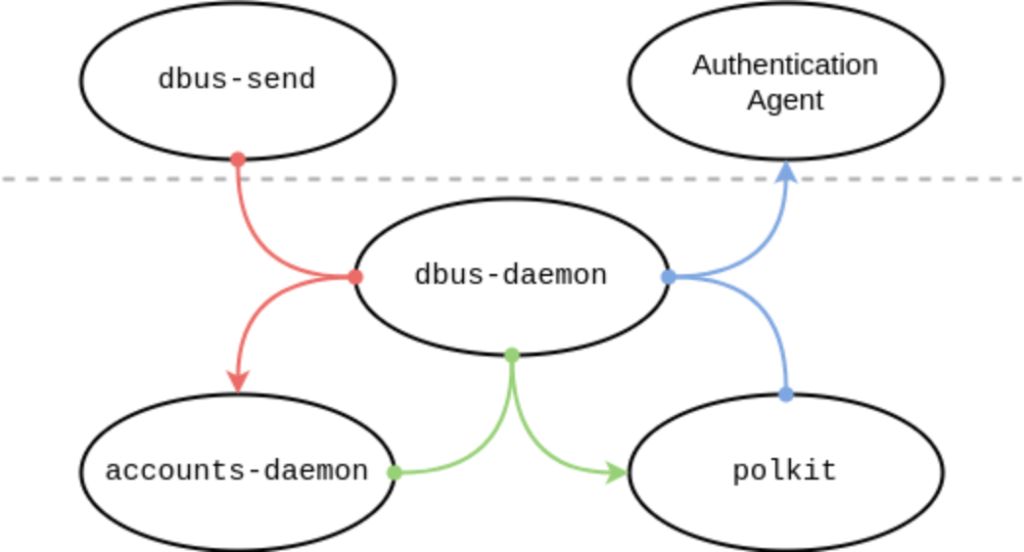May 12, 2023 CISA KEV Breakdown | Linux, Oracle, Jenkins, Apache, Red Hat, Ruckus

May 12: 7 New Vulns | CVE-2010-3904, CVE-2014-0196, CVE-2015-5317, CVE-2016-8735, CVE-2016-3427, CVE-2021-3560, CVE-2023-25717
In this CISA KEV Breakdown, seven vulnerabilities were added ranging from over a decade old to disclosed just a few months ago. Some of the older vulnerabilities reflect long known Linux Kernel flaws, as well as a flaw in the Jenkins UI. Vulnerabilities disclosed less than a decade ago (but not by much) include flaws from Oracle Java and Apache Tomcat. Vulnerabilities added from this decade include A Polkit flaw, as well as multiple affected products from Ruckus Wireless.
At this time, exploitation activity surrounding the older vulnerabilities (2016 and older) is not clear. Exploit code has existed publicly for quite some time for all of these vulnerabilities, which can be assumed as a lower barrier of entry for exploitation to occur. However, as long as exploit code has existed so has a mitigating patch. It is worth noting that the action directed to organizations bound by the KEV, specifically for the Linux Kernel vulnerabilities, points to unplugging end-of-life systems that still utilize these older versions. This could be an attempt by CISA to, rather than having further mitigations in place for these legacy systems, remove them entirely.
[wptb id=22071]Notable Vulnerability Additions
CVE-2021-3560 | Polkit Security Bypass
A vulnerability in Polkit version 0.113 and earlier that, when exploited, allows an attacker to bypass account creation security to create a new user account with ROOT privileges. The vulnerability was discovered and disclosed by Kevin Backhouse of the GitHub SecurityLab team.
The vulnerability exists due to the fact that using the unauthenticated dbus_send command to create a user and then subsequently killing the command as it runs tricks the authenticated polkit service into believing the process was executed with UID 0 due to improper error handling, meaning it thought the command originated from a root process.
This subsequently tricked the accounts-daemon in some very popular Linux distributions at time of disclosure into creating a new user account as a member of the sudo group. As of today, a patch has been released by all major Linux distributions affected.
Security Advisory:
https://bugzilla.redhat.com/show_bug.cgi?id=1961710
CVE-2023-25717 | Ruckus Wireless Admin Remote Code Execution
A vulnerability in Ruckus Wireless panels version 10.4 and older can allow for an attacker to achieve remote code execution. An attacker would need to successfully send a malicious GET request to exploit the vulnerability. Exploitation does not require user interaction or prior privilege escalation.
FortiGuard Labs observed botnet activity beginning in February of 2023 known as AndoryuBot. The crawler primarily seeks out susceptible DDoS targets and utilizes SOCKS5 proxies as a means of command-and-control. The report contains detailed information about how the botnet campaign utilizes the Ruckus vulnerability to infect hosts, as well as the malware and C2 it leaves behind. For more information on their analysis, see here.
GreyNoise has launched a tag to observe ongoing traffic utilizing the Ruckus vulnerability, which can be viewed here.
Security Advisory:
https://support.ruckuswireless.com/security_bulletins/315
← May 1, 2023 CISA Kev Breakdown
Click here to expand our CISA KEV Breakdown Frequently Asked Questions
- What makes for a notable addition?
- A notable addition can arise from many different characteristics. If a particular vulnerability is notable to the security community or a subset of the security community or if the EPSS score reveals notable information about the vulnerability, this can constitute further analysis. It may also be the case that a particular vulnerability shines a light on everyday users and we will highlight important information and key takeaways to ensure users and readers have easy access to actionable information.
- When is the Breakdown released?
- We aim to have our analysis of each KEV update posted within 24 hours of the time in which the Catalog is updated. See CISA’s full catalog here
- I am not bound by BOD 22-01 or federal regulations, why should the KEV concern me?
- CISA encourages all organizations to utilize the Catalog as an attribute in your vulnerability prioritization framework. Organizations looking to lessen the scope on known dangerous vulnerabilities and make a goal to remediate them can understand where they currently stand against what CISA has confirmed as exploited vulnerabilities in the wild. See CISA’s section on “How should organizations use the KEV catalog?” here.
- What is EPSS?
- EPSS is the Exploit Prediction Scoring System. It is an open, data-driven effort for estimating the likelihood (probability) that a software vulnerability will be exploited in the wild. See the EPSS home page on FIRST for more information here.
- What is the difference between EPSS probability and EPSS percent?
- EPSS probability is the risk calculated by the model when determining the perceived threat of the vulnerability itself. Percentage is a relative comparison of the rest of the CVEs within the given sample. While the probability only changes upon refreshing the results from the model, the percentage can change purely based on the CVE sample given. In the case of the Breakdown, we use the percentage given by the pool of all CVEs with given EPSS data. Scores may vary post-release of the post given new information about the vulnerabilities and their perceived threat. For more information on applying and understanding EPSS data, see this article on the FIRST website, as well as their FAQ page.
- What is GreyNoise?
- GreyNoise is a platform that collects, analyzes, and labels data on IPs that scan the internet and saturate security tools with noise. Through their sensor network, GreyNoise observes vulnerability exploitation attempts for vulnerabilities that are exploited in the wild over the Internet. These are arguably vulnerabilities that should be at the very top of your priority list to remediate.
- Why are GreyNoise exploitation attempts only observed on ~20% of KEV vulnerabilities?
- Exploitation of many vulnerabilities in the CISA KEV will not be observed for many reasons that GreyNoise does a good job of explaining in this post. For example:
- The vulnerability may not be remotely exploitable
- Vulnerability exploitation may require authentication (and result in privilege escalation)
- The impacted software may not be exposed to the internet
- Mass scanning/exploitation is not occurring yet
- Exploitation of many vulnerabilities in the CISA KEV will not be observed for many reasons that GreyNoise does a good job of explaining in this post. For example:
See Nucleus in Action
Discover how unified, risk-based automation can transform your vulnerability management.































